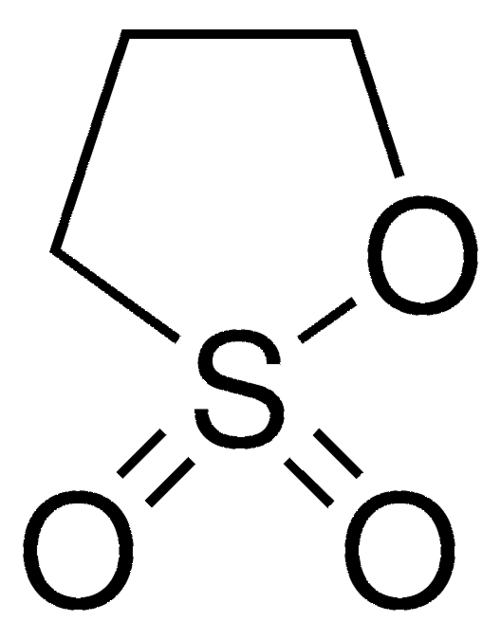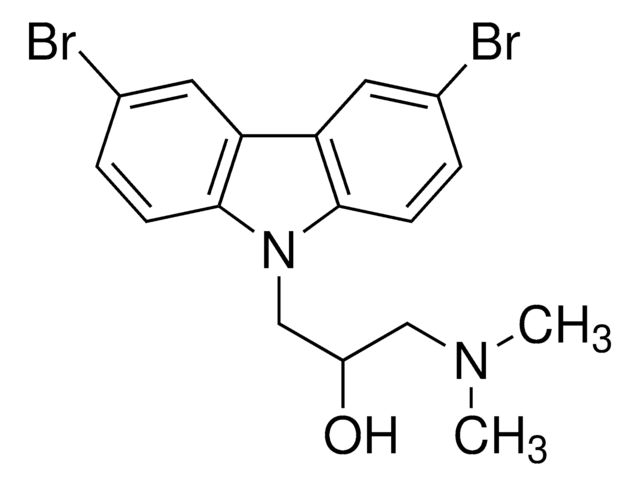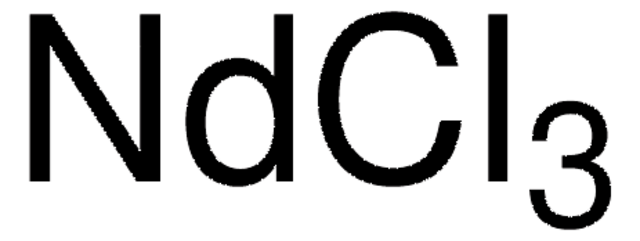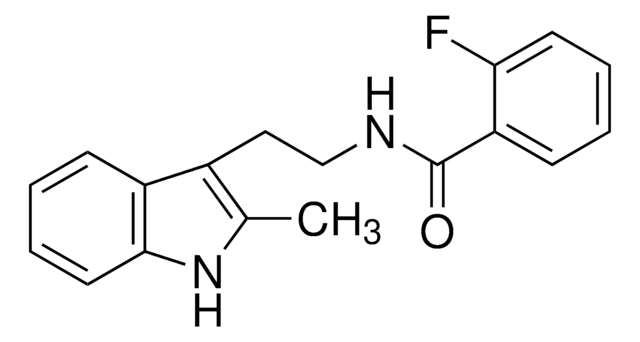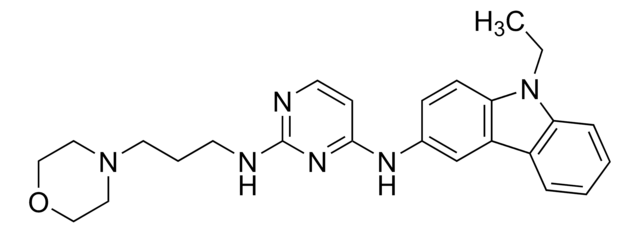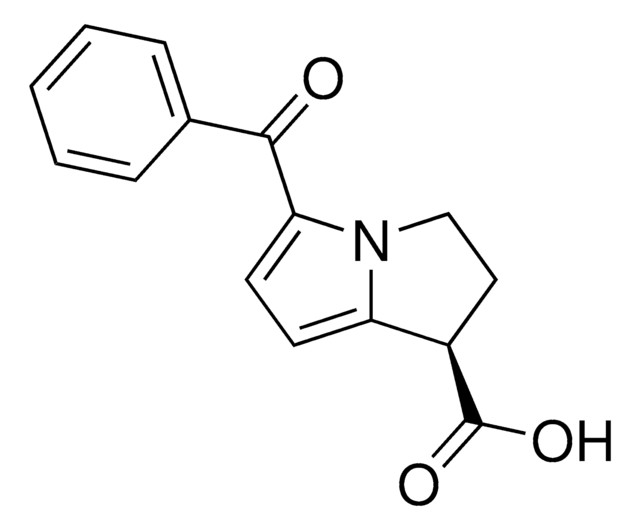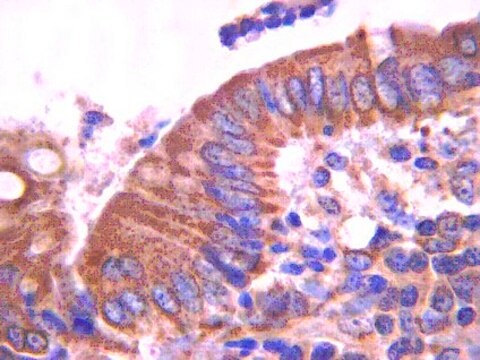SML0407
ML 141
≥98% (HPLC)
Sinónimos:
4-[4,5-Dihydro-5-(4-methoxyphenyl)-3-phenyl-1H-pyrazol-1-yl]-benzenesulfonamide
About This Item
Productos recomendados
Quality Level
assay
≥98% (HPLC)
form
powder
color
white to beige
solubility
DMSO: 5 mg/mL (warmed, clear solution)
storage temp.
2-8°C
SMILES string
NS(C1=CC=C(C=C1)N2N=C(C3=CC=CC=C3)CC2C4=CC=C(OC)C=C4)(=O)=O
InChI
1S/C22H21N3O3S/c1-28-19-11-7-17(8-12-19)22-15-21(16-5-3-2-4-6-16)24-25(22)18-9-13-20(14-10-18)29(23,26)27/h2-14,22H,15H2,1H3,(H2,23,26,27)
InChI key
QBNZBMVRFYREHK-UHFFFAOYSA-N
Application
- to inhibit CDC42 GTPase in human immortalized gingival epithelial (HIGE) cells
- as inhibitors of Rho kinase to study the role of small Rho GTPases on localization of peripheral nuclei
- as actin regulator inhibitor, to determine which actin regulators and nucleators are involved in the assembly of F-actin cages around damaged mitochondria
- as a selective, non-competitive inhibitor of Cdc42 to treat CCD-1070Sk cells
Biochem/physiol Actions
Features and Benefits
Storage Class
11 - Combustible Solids
wgk_germany
WGK 3
flash_point_f
Not applicable
flash_point_c
Not applicable
Certificados de análisis (COA)
Busque Certificados de análisis (COA) introduciendo el número de lote del producto. Los números de lote se encuentran en la etiqueta del producto después de las palabras «Lot» o «Batch»
¿Ya tiene este producto?
Encuentre la documentación para los productos que ha comprado recientemente en la Biblioteca de documentos.
Los clientes también vieron
Contenido relacionado
Cyclic nucleotides, including cyclic AMP (cAMP), cyclic GMP (cGMP) and cyclic ADP-ribose, have been extensively studied as second messengers of intracellular events initiated by activation of GPCRs. cAMP modifies cell function in all eukaryotic cells, principally through the activation of cAMP-dependent protein kinase (PKA), but also through cAMP-gated ion channels and guanine nucleotide exchange factors directly activated by cAMP.
Nuestro equipo de científicos tiene experiencia en todas las áreas de investigación: Ciencias de la vida, Ciencia de los materiales, Síntesis química, Cromatografía, Analítica y muchas otras.
Póngase en contacto con el Servicio técnico
